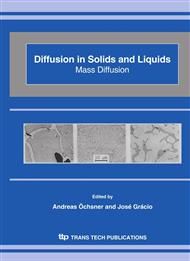p.63
p.68
p.73
p.79
p.85
p.91
p.101
p.107
p.113
Measurement of Diffusion Coefficients in Building Materials Using the Initial Rate of Sorption
Abstract:
This work presents experimental values of molecular diffusion coefficient, obtained with samples of building materials, using a non-stationary process of moisture absorption. The experiments covered four different types of building materials (with two selected ranges of relative humidity) and were carried out in the range of temperatures between 20°C and 40°C. The results show that the increase in temperature resulted in an increase in molecular diffusion coefficient and the relative humidity also influenced the molecular diffusion in a uniform manner. Finally, a good agreement with literature values was found.
Info:
Periodical:
Pages:
85-90
Citation:
Online since:
October 2006
Authors:
Price:
Сopyright:
© 2006 Trans Tech Publications Ltd. All Rights Reserved
Share:
Citation:


